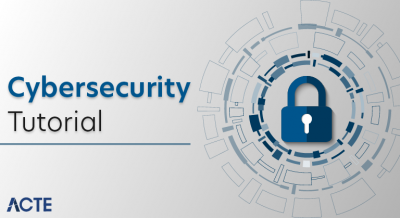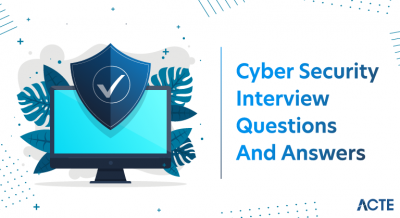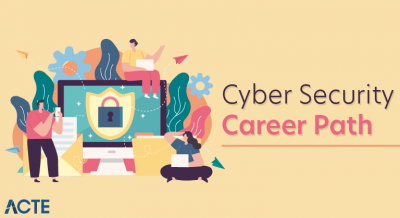
- What is Cyber Forensics
- Importance of Cyber Forensics
- Digital Evidence Basics
- Cyber Forensics Process
- Tools Used in Cyber Forensics
- Types of Cyber Forensics
- Legal Aspects
- Forensic Investigation Lifecycle
- Real-World Applications
- Conclusion
What is Cyber Forensics
In today’s digital world, the rapid adoption of technology has created immense opportunities for growth, communication, and innovation. However, it has also given rise to cybercrime, which has become one of the most significant threats to individuals, businesses, and governments. To counter these threats, cyber forensics also known as computer forensics or digital forensics has emerged as a critical field in cybersecurity. It involves collecting, analyzing, and preserving digital evidence to investigate cybercrimes and security breaches. To build the foundational skills required for such roles, explore Cyber Security Training a hands-on learning path that covers threat analysis, incident response, forensic techniques, and real-world lab simulations designed to prepare professionals for today’s evolving threat landscape. Cyber forensics involves the collection, preservation, analysis, and presentation of digital evidence from electronic devices such as computers, smartphones, servers, and networks. It enables investigators to trace attacks, identify perpetrators, and ensure that cybercriminals are held accountable in a court of law.
Importance of Cyber Forensics
Cyber forensics plays a vital role in both criminal justice and corporate investigations. For law enforcement agencies, digital evidence can be crucial in solving cases ranging from identity theft and hacking to terrorism and financial fraud. To understand how forensic techniques align with secure web practices, explore Guide to Web Security a comprehensive resource that covers threat detection, evidence preservation, and secure application protocols essential for both investigative and preventive cybersecurity strategies.

For enterprises, forensic analysis helps detect insider threats, intellectual property theft, and data breaches. Without cyber forensics, it would be nearly impossible to reconstruct cybercrimes, especially since criminals often attempt to erase their tracks by deleting logs, encrypting files, or masking their identities. Moreover, courts rely heavily on accurate and tamper-proof evidence to prosecute offenders, making forensic methods indispensable for delivering justice.
Interested in Obtaining Your Cyber Security Certificate? View The Cyber Security Online Training Offered By ACTE Right Now!
Digital Evidence Basics
Digital evidence refers to any electronic data that can be used to prove or disprove an event, activity, or crime. Unlike physical evidence, digital evidence is intangible and easily altered, which means it requires special handling. There are different forms of digital evidence, such as log files, emails, browser history, images, videos, metadata, and deleted files. To understand how such evidence is generated, transmitted, and preserved across interconnected environments, explore Cyber-Physical Systems Work a detailed guide that explains how sensors, software, and networked devices interact to produce traceable digital footprints critical for forensic investigations and system integrity. Forensic experts must ensure chain of custody, which documents every step of evidence handling to maintain its integrity and admissibility in court. Furthermore, forensic professionals often use write blockers, imaging tools, and hashing techniques (like MD5 or SHA-256) to preserve original data without altering it during the investigation process.
To Explore Cybersecurity in Depth, Check Out Our Comprehensive Cyber Security Online Training To Gain Insights From Our Experts!
Cyber Forensics Process
The cyber forensics process follows a structured approach to ensure reliable and legally defensible results. Generally, it involves the following steps: evidence identification, collection, preservation, analysis, and presentation. To understand how these steps reinforce accountability and prevent denial of actions in digital investigations, explore Non-Repudiation in Cyber Security a focused guide that explains how cryptographic techniques, audit trails, and forensic protocols ensure that digital actions can be verified and attributed with confidence.
- Identification: Detecting potential sources of evidence, such as hard drives, cloud storage, emails, or mobile devices.
- Preservation: Ensuring that data is not tampered with by creating forensic images and maintaining chain of custody.
- Collection: Extracting evidence using specialized tools and techniques while maintaining data integrity.
- Examination: Filtering, recovering, and organizing the collected data for relevant information.
- Analysis: Interpreting the evidence to reconstruct events, identify suspects, and determine the scope of the crime.
- Presentation: Documenting findings and presenting them in a clear, concise, and legally acceptable format in court or to an organization.
This systematic process ensures that cyber forensics investigations remain unbiased, accurate, and scientifically valid.
Tools Used in Cyber Forensics
Forensic experts use a wide range of specialized tools to extract and analyze digital evidence. Some popular ones include disk imaging software, memory analyzers, log file parsers, and mobile data extraction kits. To understand how these tools are also used to investigate online harassment and manipulation, explore What Is Cyber Trolling a detailed guide that explains the technical, psychological, and legal aspects of trolling, including how forensic methods help trace abusive behavior and support digital justice.
- EnCase: Widely used for disk imaging and investigation of operating systems.
- FTK (Forensic Toolkit) : Known for file decryption, email analysis, and data recovery.
- Autopsy: An open-source forensic platform that helps analyze hard drives and mobile devices.
- Wireshark: Used for capturing and analyzing network traffic.
- X-Ways Forensic: Lightweight tool for disk cloning and forensic imaging.
- Magnet AXIOM: Designed for digital forensics and mobile device analysis.
These tools allow investigators to recover deleted files, decrypt passwords, analyze logs, and reconstruct events, which are crucial for solving cybercrimes.
Looking to Master Cybersecurity? Discover the Cyber Security Expert Masters Program Training Course Available at ACTE Now!
Types of Cyber Forensics
Cyber forensics is a broad discipline that covers multiple areas of investigation. The major types include:
- Computer Forensics: Focuses on desktops, laptops, and hard drives to extract evidence like files, logs, and deleted data.
- Network Forensics: Analyzes network traffic and logs to detect intrusion attempts, malware infections, and unauthorized access.
- Mobile Forensics: Deals with smartphones and tablets to recover call logs, texts, images, GPS locations, and app data.
- Cloud Forensics: Focuses on cloud storage platforms like AWS, Google Drive, or Microsoft Azure to identify unauthorized access and data leaks.
- Malware Forensics: Involves reverse engineering malware samples to understand their functionality, impact, and source.
- Email Forensics: Analyzes email content, headers, and attachments to detect phishing, fraud, or insider threats.
Each type addresses different aspects of digital evidence, making them collectively essential in modern investigations.
Preparing for Cyber Security Job Interviews? Have a Look at Our Blog on Cyber Security Interview Questions and Answers To Ace Your Interview!
Legal Aspects
One of the most critical aspects of cyber forensics is ensuring compliance with legal frameworks and privacy laws. Evidence gathered must be admissible in court, which means investigators must adhere to strict guidelines. For example, in the United States, the Fourth Amendment and the Electronic Communications Privacy Act (ECPA) regulate how digital evidence can be collected. In Europe, the GDPR (General Data Protection Regulation) plays a key role in handling personal data. To gain the legal and technical expertise required for such investigations, explore Cyber Security Training a comprehensive program that covers digital forensics, regulatory compliance, evidence handling protocols, and courtroom-ready documentation practices for aspiring cybersecurity professionals. Failure to comply with these regulations can result in evidence being dismissed or organizations facing penalties. Cyber forensics professionals must therefore balance investigative needs with ethical and legal obligations to protect individual privacy.
Forensic Investigation Lifecycle
The cyber forensic investigation has several important steps, each created to carefully handle cybercrime. It starts with preparation. Here, investigators prepare tools, secure permission, and define what the investigation will cover. To understand how these investigative steps align with broader threat landscapes, explore Overview of Cybersecurity Threats a strategic guide that outlines the most prevalent attack vectors, evolving threat actors, and the role of forensic readiness in modern cyber defense.

After this, the team focuses on incident response, trying to contain the incident and prevent more damage. Once the main threat is handled, the next step is data collection, which means securely getting digital evidence in a verifiable way to keep the investigation accurate. After evidence collection, investigators study the data to recreate the events of the incident. This goes with detailed documentation, which includes taking detailed notes and creating logs and reports to keep the process transparent. The investigation results are then shared in court or internal hearings, where experts explain their conclusions and the evidence. The process ends with a review. Here, the lessons learned improve future investigations. This structured method makes cybercrime investigations repeatable and standard and also increases the forensic process’s overall value.
Real-World Applications
Cyber forensics has countless applications in both criminal cases and corporate environments. For instance, law enforcement agencies use it to track cybercriminal gangs, solve fraud cases, and investigate cyberterrorism incidents. Corporations employ forensic experts to detect insider threats, investigate intellectual property theft, or analyze data breaches. Real-world examples include targeted attacks uncovered through simulated exploits. To understand how ethical hacking contributes to these discoveries, explore Penetration Testing Key Insights a tactical guide that reveals how controlled testing environments expose vulnerabilities, validate forensic findings, and strengthen organizational cyber resilience.
- The WannaCry ransomware attack (2017) – where forensic analysis helped track the malware to suspected nation-state actors.
- Enron email investigation – where forensic email analysis played a major role in uncovering corporate fraud.
- Identity theft and financial fraud cases – where forensic experts use logs, credit card trails, and emails to identify perpetrators.
These cases demonstrate how cyber forensics plays a critical role in protecting individuals, businesses, and nations from digital threats.
Conclusion
Cyber forensics has become a cornerstone of modern cybersecurity, bridging the gap between technology and law enforcement. As cybercrimes continue to evolve, forensic experts play a vital role in detecting, analyzing, and prosecuting digital threats. From analyzing hard drives to investigating cloud storage, cyber forensics provides the tools and methodologies needed to uncover hidden evidence and ensure justice. To develop the technical depth and investigative skills required for such roles, explore Cyber Security Training a career-focused program that equips learners with hands-on experience in digital forensics, threat analysis, and incident response tailored for real-world cybercrime scenarios. While challenges such as encryption and jurisdictional issues remain, advancements in tools, AI-based analytics, and international cooperation promise a bright future for this field. For aspiring professionals, certifications and hands-on experience offer excellent pathways into one of the most critical domains of cybersecurity.




